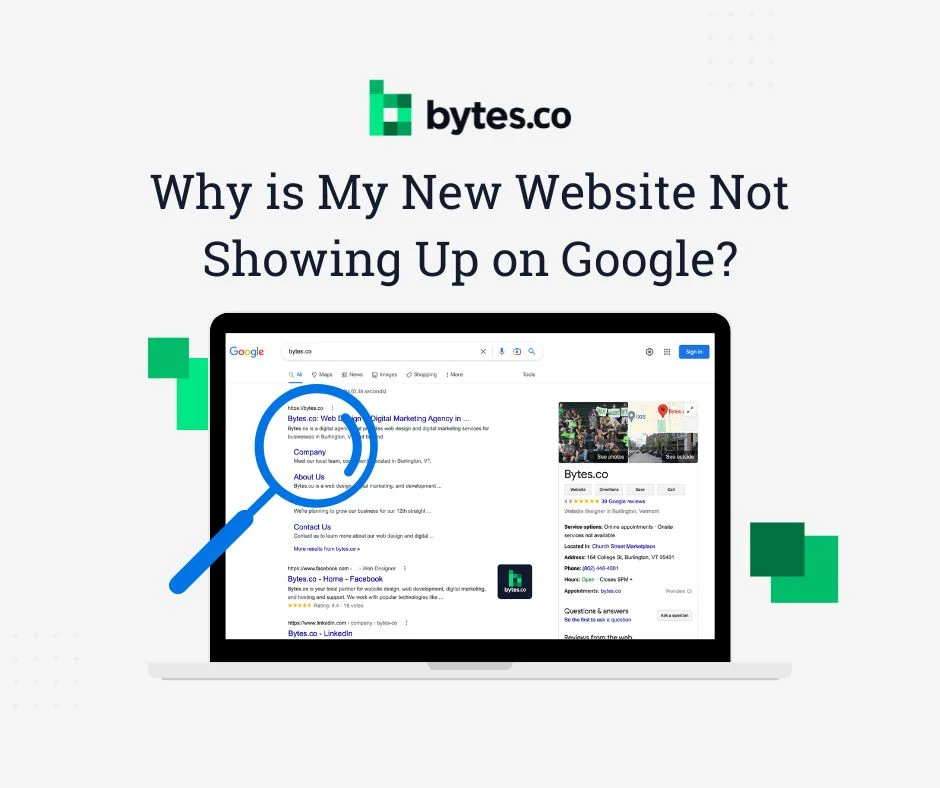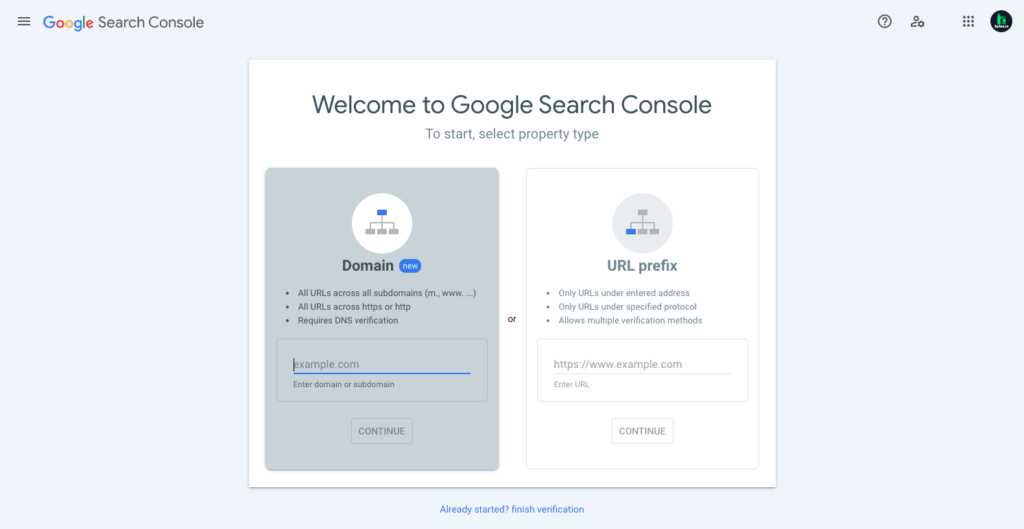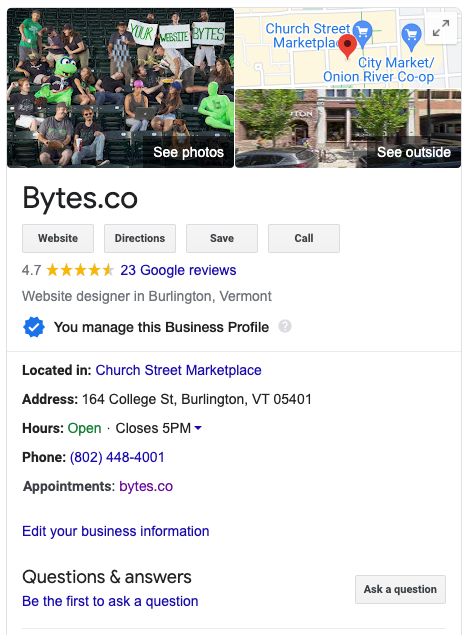


One of the most common questions received by the Bytes.co team after the launch of a new website is “Why is my new website not showing up on Google?”. While a new website will eventually be crawled and indexed by Google, there are steps that can be taken to improve the indexability of a website to increase the speed at which it will be served in Google Search results.
To get started, at a minimum, it would be recommended to verify Google Search Console and submit a sitemap to Google. Once Google Search Console is verified and a sitemap has been submitted, it can’t hurt to inspect the homepage of the website with Google Search Console’s URL Inspection tool and request indexing. While verifying Google Search Console and submitting a sitemap alone should help get Google to crawl your site faster, requesting an index of the homepage can’t hurt. It would also be recommended to verify Bing Webmaster Tools and submit a sitemap to Bing. However, verifying Google Search Console and submitting a sitemap to Google should be prioritized.

Outside of Google Search Console and Bing Webmaster Tools, the other main task to help increase a website’s indexability is the setup or updating of the business’s Google Business Profile (formerly Google My Business). If not already done, an existing business profile can be claimed by following Google’s business verification process. Once claimed, add the new or updated website URL to the business profile. Similar to Google Search Console, it would also be recommended to verify a Bing Places listing and ensure the new or updated website URL is added. With a Google Business profile and Bing Places, listing claimed it would be recommended to work to increase reviews on both platforms.

With the setup of Google Search Console, Bing Webmaster Tools, Google Business Profile, and Bing Places complete, work to generate engagement on and links to the website. One of the most effective ways to increase engagement on a website is through blogging. The consistent development of original content on a website works to both add fresh content and increase on-site engagement. Both of these act as ranking signals within Google’s algorithm. New blog posts can also be shared across social media to create additional links and generate traffic. Any content added to the website should be original and not copied from elsewhere on the website or the internet. Utilizing duplicate content can result in Google levying a penalty against the website and can negatively impact rankings.
To improve the website domain authority, work to generate relevant and credible links on third-party websites pointing back to the website. The easiest links to create are those that can be added to other first-party web properties such as social media profiles. It would be recommended to add the new or updated website URL to social media profiles such as Facebook, Instagram, Twitter, SoundCloud, etc. It would also be recommended to share the new or updated website URL on your social media profiles as a dedicated post. Generating links on third-party websites should also be prioritized. These can include websites of partners, resource websites (such as a Chamber of Commerce), directory listings (such as Yellow Pages), and more. Black hat SEO and link building tactics, such as purchasing links from link farms should never be utilized. Utilizing tactics such as these can also result in Google levying a penalty against the website, thus negatively impacting rankings.
To wrap up, many digital marketers would say generating traffic on the website and clicks on Google can also help to increase indexability, though Google would say neither are a direct ranking signal. For example, running paid advertising campaigns can help to increase site traffic and on-site engagement. However, simply running campaigns through Google Ads will not directly increase rankings. Similarly, some digital marketers would also argue that increasing the volume of clicks of your organic list on search engine result pages (SERPs) can also increase indexability. For example, sharing a link to a search result page for “bytes.co” (https://www.google.com/search?q=bytes.co) instead of the website link (https://bytes.co/) itself. Although this is supported by MOZ, Google has never expressly stated this can improve rankings.
If you’ve been curious why your new website isn’t showing up on Google, simply follow these tips and that new website will be showing in search results before you know it. However, SEO is an ongoing process. Through extensive keyword research, content optimizations, and technical audits, we’re here to help you increase and maintain your website’s search rankings over time. Contact us to help get your website to show up on Google and for ongoing SEO management.
More tips and information to index and rank content faster: https://moz.com/blog/seo-tips-index-rank-content-faster